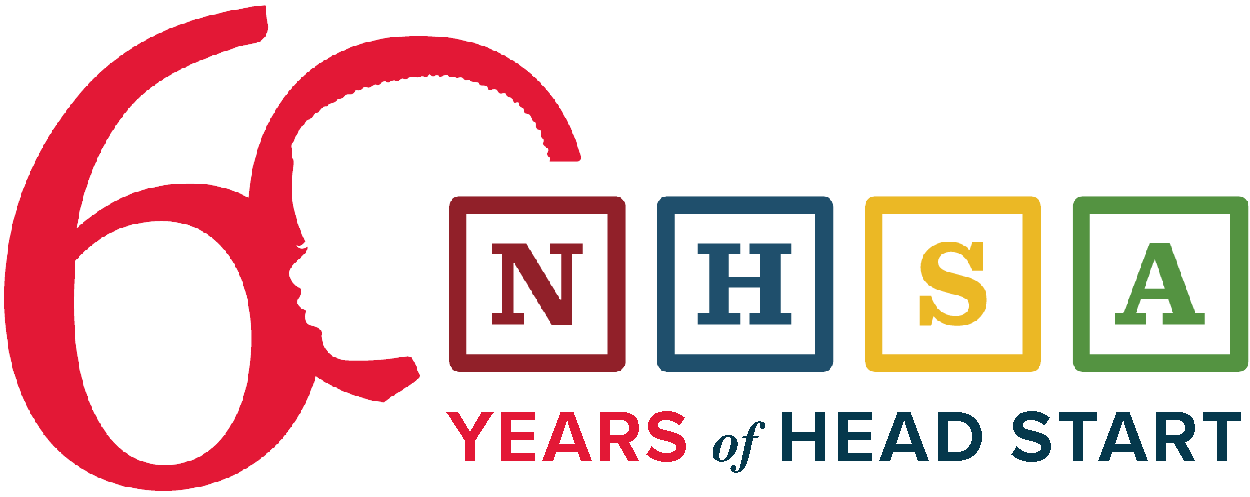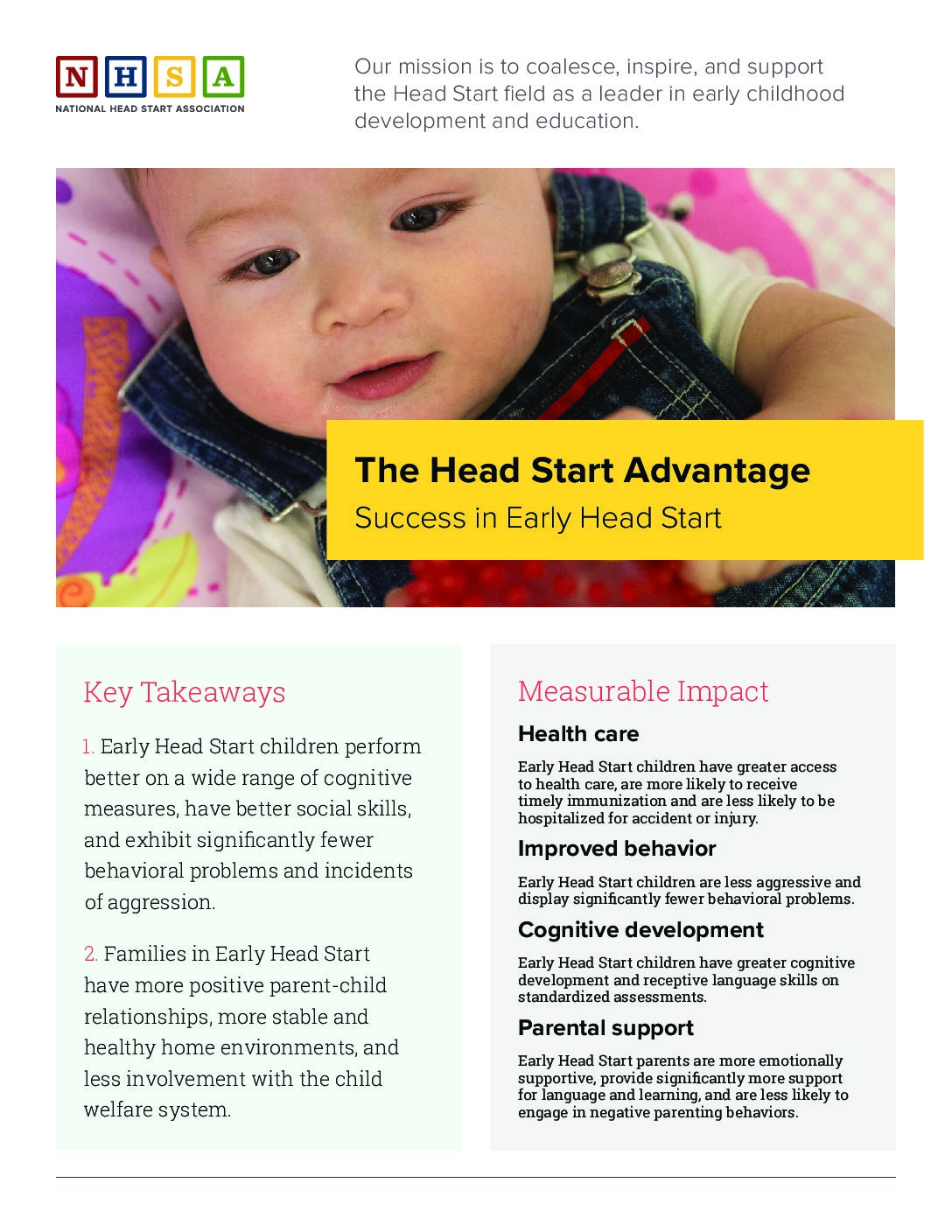Children experience dramatic early brain development in their first three years. Safety, sufficient nutrients, nurturing care, and developmentally-appropriate stimulation set the foundation for a child’s lifelong wellbeing and success. That’s why Early Head Start children perform better on a wide range of cognitive measures, have better social skills, and exhibit significantly fewer behavioral problems and incidents of aggression. Likewise, families in Early Head Start have more positive parent-child relationships, more stable and healthy home environments, and less involvement with the child welfare system. Early Head Start children:
- Have greater access to health care, are more likely to receive timely immunization, and are less likely to be hospitalized for accident or injury.
- Are less aggressive and display significantly fewer behavioral problems.
- Have greater brain development, cognition, and receptive language skills on standardized assessments.
Poverty and economic inequality can negatively impact a child’s development in many ways, including threatening the wellbeing of their caregivers. Maternal depression affections child development both in utero and in the early years.
Early Head Start offers a wide range of services to help parents increase their knowledge, skills, and attitudes related to parenting, as well as enhance their own well-being, including prenatal and postpartum health care, housing and food security, parental education, employment, and more. Early Head Start parents are more emotionally supportive, provide significantly more support for language and learning, and are less likely to engage in negative parenting behaviors.
Citations
If you have any questions about this resource or any of the citations below, please don’t hesitate to contact: research@nhsa.org
Measurable Impact
- U.S. Department of Health & Human Services. Administration for Children & Families. Office of Planning, Research & Evaluation. (2015). Toddlers in Early Head Start: A Portrait of 3- Year-Olds, Their Families, and the Programs Serving Them Volume I: Age 3 Report. (Link)
- Mathematica Policy Research, Inc. (2002). Making a difference in the lives of infants and toddlers and their families: The impacts of early Head Start (DHHS-105-95-1936). Washington D.C.: U.S. Department of Health and Human Services. (Link)
- U.S. Department of Health and Human Services. (2003). Overall Findings and Implications for Programs From the Early Head Start Research and Evaluation Project, Long Version: PowerPoint Presentation. (Link)
- Vogel, C., Brooks-Gunn, J., Martin, A., & Klute, M. M. (2013). III. Impacts of early Head Start participation on child and parent outcomes at ages 2, 3, and 5. Monographs of the Society for Research in Child Development, 78(1), 36-63.
- Mathematica Policy Research, Inc. (2002).
- Love, J. M., Kisker, E. E., Ross, C., Raikes, H., Constantine, J., Boller, K., … & Fuligni, A. S. (2005). The effectiveness of early head start for 3-year-old children and their parents: lessons for policy and programs. Developmental psychology, 41(6), 885- 901.
Why are the early years a critical period of early brain development?
- McLoyd, V. (1998). Socio-economic disadvantage and child development. American Psychologist, 53(2), 185–204.
- Diego, M. A., Field, T., Hernandez-Reif, M., Schanberg, S., Kuhn, C., & Gonzalez-Quintero, V. H. (2009). Prenatal depression restricts fetal growth. Early Human Development, 85, 65-70.
- Goodman, S. H., & Gotlib, I. H. (1999). Risk for psychopathology in the children of depressed mothers: A developmental model for understanding mechanisms of transmission. Psychological Review, 106, 458-490.
- Kiernan, K. E. and Huerta, M. C. (2008), Economic deprivation, maternal depression, parenting and children’s cognitive and emotional development in early childhood. The British Journal of Sociology, 59: 783-806.
- Conger, R. D., & Donnellan, M. B. (2007). An interactionist perspective on the socioeconomic context of human development. Annu. Rev. Psychol., 58, 175-199.
- U.S. Department of Health & Human Services, Administration for Children and Families, Administration on Children, Youth and Families. Early Childhood Learning & Knowledge Center. Head Start. (2018). 2017-2018 Head Start Program Information Report. (Link)
- Raikes, H. H., Roggman, L. A., Peterson, C. A., Brooks-Gunn, J., Chazan-Cohen, R., Zhang, X., & Schiffman, R. F. (2014). Theories of change and outcomes in home-based Early Head Start programs. Early Childhood Research Quarterly, 29(4), 574- 585.
- Administration for Children and Families. (2002a). Making a difference in the lives of infants and toddlers and their families: The impact of Early Head Start programs on young children and their families: Vol. 1. Final Technical Report. Washington, DC: U.S. Department of Health and Human Services. (Link)
- Administration on Children and Families. (2002b). Making a difference in the lives of infants and toddlers and their families: The impact of Early Head Start: Vol. II. Final Technical Report. Washington, DC: U.S. Department of Health and Human Services. (Link)
Bullets
- Vogel, C., Brooks-Gunn, J., Martin, A., & Klute, M. M. (2013). III. Impacts of early Head Start participation on child and parent outcomes at ages 2, 3, and 5. Monographs of the Society for Research in Child Development, 78(1), 36-63.
- Chazen-Cohen, R., Ayoub, C., Pan, B. A., Roggman, L., Raikes, H., McKelvey, L., Whiteside-Mansell, L., & Hart, A. (2007). It takes time: Impacts of Early Head Start that lead to reductions in maternal depression two years later. Infant and Mental Health Journal, 28, 151-170.
- Mathematica Policy Research, Inc. (2002).
- Raikes, H. H., Roggman, L. A., Peterson, C. A., Brooks-Gunn, J., Chazan-Cohen, R., Zhang, X., & Schiffman, R. F. (2014).
- Green, B. L., Ayoub, C., Bartlett, J. D., Von Ende, A., Furrer, C., Chazan-Cohen, R., … Klevens, J. (2014). The effect of Early Head Start on child welfare system involvement: A first look at longitudinal child maltreatment outcomes. Children and Youth Services Review, 42,127–135.

